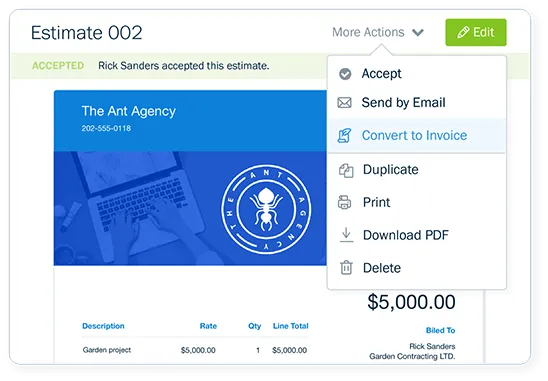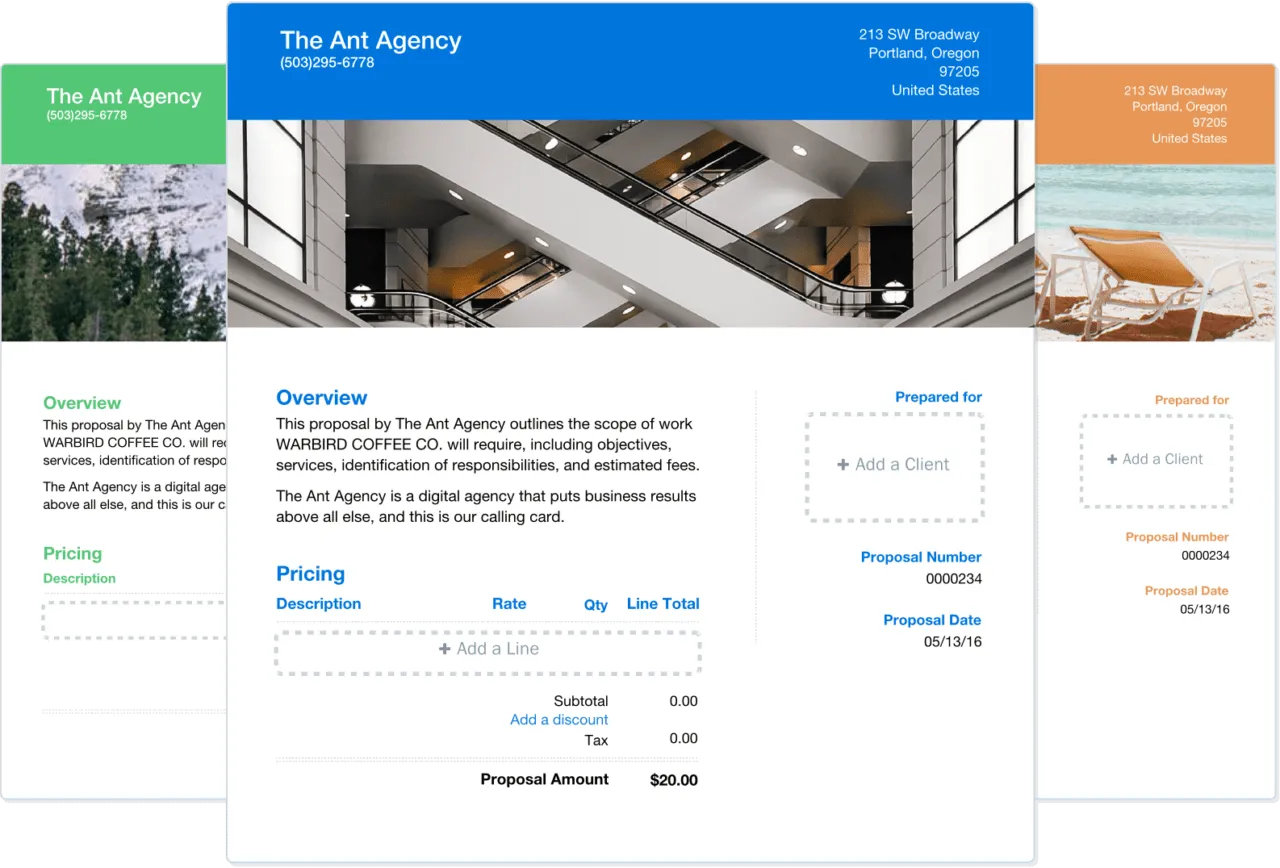Is an Estimate Legally Binding? | A Small Business Primer

An estimate is usually not legally binding. However, some bids are mislabeled as estimates. A bid is considered an offer under contract law. If an offer is accepted, a contract is established and becomes legally binding. The provider can’t withdraw their offer.
Don’t let estimate creation overtake your time. FreshBooks offers estimate software that helps small businesses create and send professional, accurate quotes to their clients. Click here to sign up for your free trial.

Key Takeaways
- A legally binding estimate is a written agreement made in advance of services that clearly states the price for services.
- A non-binding estimate is calculated as a projected amount and doesn’t outline a guaranteed price.
- An estimate can be binding if it says specifically that all costs are final and guaranteed, that you and your client are bound to these fees, and that both you and the client sign the statement.
- An offer can become a contract when it includes the client and provider identities, a clear offer, a price of services, any other essential terms, and clear acceptance of the offer.
- Regardless of the format, a written agreement may be a good idea, as you can more finely detail the provider’s and client’s obligations.
In this article, we’ll cover:
Binding Vs No-Binding Estimates

What Is a Binding Estimate?
A binding estimate is a written agreement made before services that indicates the estimated cost for services. The quoted amount in the estimate is the amount the customer will pay. This remains true even if there ends up being unforeseen extra costs. The estimate is based on the inventoried quantity of items and services requested.
These costs are calculated according to itemized inventory, not weight. If the inventory is correct, remains unchanged come moving day, and the scope of services doesn’t change, the price remains the same. If additional inventory is added or if extra services are requested, the price can change, even if the estimate is binding.
Binding Vs. Non-Binding Estimates
There are benefits and considerations to take with both binding and non-binding estimates. Before providing a client or customer with an estimate, consider which option is best for you.
A binding estimate is typically the preferred choice of businesses and customers. Because a binding estimate provides a firm price and doesn’t change after services occur, it’s the safest way to ensure you have no surprises when it comes time for payment. Binding estimates limit risk and provide a realistic figure for the company and customer to expect.
The basic guidelines for a binding estimate are as follows:
- The company cannot add additional charges to the estimate without first informing the customer.
- Any additional services requested on the day of the work will be billed separately from the binding estimate amount.
- You must provide the customer with the estimate in writing and state that the estimate is binding and a legal document.
- You can refuse service and draft a revised estimate with a new final cost if you notice additional items or add-ons not originally agreed upon in the binding estimate.
A non-binding estimate projects the cost for your services and doesn’t outline a contracted or guaranteed price. Instead, the price is calculated according to the weight of items and the number of materials used by the company. If you’re looking for a way to charge accurately without the possibility of underestimating the cost of the services rendered, a non-binding estimate is the way to go. Remember, non-binding estimates can be a gamble and lead to more hassle and back and forth with customers after the services occur. They aren’t a legal contract.
The basic guidelines for a non-bind estimate are as follows:
- You must provide a reasonably accurate estimate based on the weight and services requested.
- You must explain that all service charges are under a non-bing estimate.
- You must provide a non-binding estimate in writing, state it’s a non-binding estimate, and offer it without charge.
Is an Estimate Binding?
An estimate is normally what a small business believes its services will cost for a certain project. It is not binding because it doesn’t include final costs, just an approximation of the costs. The estimate should state what factors will determine the final amount, like the project timeline.
- For example, a moving company sends an estimate to the homeowner says it will cost $10,000 to move the entire contents of their old home to their new home in the next state. This number is based on the estimated weight of the owner’s possessions, the distance to travel, packing services, and the mover’s insurance. The estimate will state that the final price can vary based on the actual weight of the contents of the house.
However, just an estimate can be binding if it says specifically that all costs are final and guaranteed and that you and your client are bound to these fees. A legally binding estimate must be in writing, and a copy must be sent to the client before the service is provided.
- For example, a moving company gives a homeowner an estimate that states it is binding. The costs listed are final and cannot increase or decrease, even if the homeowner’s possessions are heavier than estimated. If the homeowner requests additional services, then the mover will ask you to sign an addendum to the binding estimate that includes these new costs.
When an Estimate Is Actually a Bid
Some bids are incorrectly labeled estimates. Sometimes a small business will use the word “estimate” at the top of a document, but they are creating a bid.
- For example, a bid states that the job offer can only be accepted until a certain date. The estimate is not an approximation of costs but a bid for work.
Bids are proposals that detail the cost of a project. They are common in the construction industry and with sub-contractors. A company chooses a contractor from several bids submitted.
Contract law says that bids are considered offers, which can be accepted or rejected. Small businesses can withdraw their offer whenever they like.
If an offer is accepted, it becomes a contract. A contract can be written or verbal.
A contract is legally binding because one party (the small business) promises to perform a service in exchange for another party (the client) paying for that service.
Each party then has legally enforceable rights as long as the offer is accepted. Neither the client nor the small business can withdraw the offer or their acceptance.
How Offers Can Become Contracts
To become a contract, an offer must include:
- Who the parties are (client and provider)
- A clear offer: “I will design you a logo for $500”
- Price of services to be provided
- Any other essential terms
- Clear acceptance: “I will pay for a logo from you for $500”
That said, you can include a line in your bid that legally binding contracts are formed only when the bid is accepted, and a formal written agreement is signed.
A written agreement may be a good idea anyway, as you can more finely detail the provider’s and client’s obligations.

Conclusion
In general, a binding estimate does much more than just maintain calm between the company and the client. Because both parties can rely on the figures provided and know what to expect, you can make plans based on estimates without major changes popping up. As long as both parties have an agreement to an estimate provided as a written statement, you can be reasonably assured of a stress-free job. A binding estimate also often sees quicker payments from clients since there are no charges they need to scrutinize or surprises they need to contend with.
As long as you build accurate and professional practices for judging the weight and time required for jobs, a binding estimate is a great way to build rapport with clients, keep a clear understanding of your profits and loss, and continue to scale a successful business.
Don’t let estimates, quotes, and proposals weigh you down. FreshBooks offers proposal software that helps you show value, win clients, and polish up your pitches. Click here to start your free trial.

People also ask:
- What Is an Estimate vs. a Contract?
- Is a Signed Estimate a Contract?
- Is there a legal difference between a quote and an estimate?
- How much over an estimate can a contractor go?
- What is the importance of a written estimate?
What Is an Estimate vs. a Contract?
An estimate is a non-legally binding document. It is an approximation of costs for a project, drawn up by a business to send to a client. It is not a promise. The small business providing the estimate can withdraw their offer or the client can reject it. Neither side is bound to its terms.
A contract is a legal agreement between parties where each promises to do something, according to the Small Business. The contract is legally binding under contract law and if either party doesn’t fulfill his or her promises, they can be sued.
Is a Signed Estimate a Contract?
If the estimate is presented in writing as the cost of the job, with a description of the work or services, and is signed by both the company and the client, it is a binding contract with a fixed-priced bid. You can add language to a binding estimate that allows you to modify the price for specific reasons as long as those changes are communicated to the customer before the services.
Is there a legal difference between a quote and an estimate?
Estimates are typically a rough idea of a price used as a guide to agree with a customer regarding services offered. A quote is an exact price for the job being offered. The fixed price can’t be changed once accepted by the customer unless a new quote is agreed to. Therefore, it is crucial to create a clear and accurate quote. You can follow our post on how to do a quotation to prepare a precise quote. On the other hand, an estimate is binding and signed by both parties, serving as a legally binding contract between them.
How much over an estimate can a contractor go?
Standard estimates can see an overage of 10 to 20 percent, especially if the company discovered issues that couldn’t have been seen until the work began. Estimates should rarely exceed a 20% increase without rediscussing the scope of work with a client and agreeing to a new price point.
What is the importance of a written estimate?
Written estimates provide tangible proof of an agreement and understanding between a company and a customer. In the unfortunate case of a dispute, a written estimate is the best way to ensure you keep your professional word and avoid hassle or a major legal back and forth with an upset client.
About the author
Jami Gong is a Chartered Professional Account and Financial System Consultant. She holds a Masters Degree in Professional Accounting from the University of New South Wales. Her areas of expertise include accounting system and enterprise resource planning implementations, as well as accounting business process improvement and workflow design. Jami has collaborated with clients large and small in the technology, financial, and post-secondary fields.
RELATED ARTICLES


 How to Estimate Photography Jobs in 6 Steps: A Guide for Freelancers
How to Estimate Photography Jobs in 6 Steps: A Guide for Freelancers How to Price Landscaping Jobs in 7 Steps: A Simple Guide
How to Price Landscaping Jobs in 7 Steps: A Simple Guide How to Estimate Power Washing Jobs in 5 Steps: A Simple Guide for Small Businesses
How to Estimate Power Washing Jobs in 5 Steps: A Simple Guide for Small Businesses How Much Do Painters Charge in 2025?
How Much Do Painters Charge in 2025? How Much Do Web Designers Charge? A Pricing Guide
How Much Do Web Designers Charge? A Pricing Guide How to Write an Estimate in 5 Steps: A Small Business Guide
How to Write an Estimate in 5 Steps: A Small Business Guide